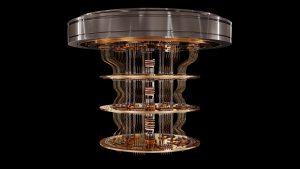 It is not every day that the rough-and-tumble “giga” world of mining and mineral refining interacts with the rarefied and metaphysical “nano” realm of quantum physics. The lawyers at Pillsbury and other law firms engaged in each endeavor rarely darken each other’s doors. But the streams are indeed converging today, as rare earths and related critical materials have been found to be uniquely suited for developments in quantum computing.
It is not every day that the rough-and-tumble “giga” world of mining and mineral refining interacts with the rarefied and metaphysical “nano” realm of quantum physics. The lawyers at Pillsbury and other law firms engaged in each endeavor rarely darken each other’s doors. But the streams are indeed converging today, as rare earths and related critical materials have been found to be uniquely suited for developments in quantum computing.
The quirky theories and discoveries of particle physics have transfixed fiction writers and real-life scientists for decades. With the recent, rapid exploration of quantum computing, some of these ideas are shifting from fantasy into practical application. Researchers and investors see a future where super-charged computers will break barriers in industries like finance, automotive, energy, pharmaceuticals and many more. The quantum computing market is expected to grow by around 30% by 2029.
Quantum technology runs on the notoriously difficult-to-stabilize qubit. Unlike binary bits in classical physical components in computers and cell phones, qubits can operate in more than one state at a time (known as superposition), and they have an uncanny ability to remain interconnected even when separated (known as entanglement). These features mean that the speed with which quantum computers can solve problems is virtually limitless—once science understands how to capitalize on their abilities, that is. An MIT article reports that an encryption problem that only a short while ago was thought to require billions of qubits may be susceptible to solution with a much more manageable number.
But there’s a hang-up—quantum machines are finicky. They tend to like things quiet, still and cold, in some cases requiring a temperature around absolute zero, or about -460 degrees Fahrenheit. The quantum computing process must be isolated and protected from “decoherence.” Noise in the system means that answer-checking routines consume enormous amounts of computational effort and energy.
Scientists are still working out the best ways to help quantum machines function in real-world scenarios. Regardless of the paths taken to get there, it seems a given that rare earth metals and other critical materials will prove essential building blocks.
Rare earths themselves are described in our prior post concerning their use in the energy transition. Each element has subtle differences in charge characteristics that can be isolated with precision in the beneficiation, processing and manufacturing process. That precision can in turn address this field’s other biggest challenges—scalability and reproduction.
As scholars grapple with these puzzles, a number of techniques have emerged for taming otherwise rowdy qubits, each with its own material needs. Some of the elements are household names, while others are generally known only as obscure boxes on a high-school chemistry class periodic table.
- Superconducting: At a low-enough temperature, metals like aluminum and niobium no longer offer electrical resistance. This phenomenon makes them popular options for keeping fussy qubits stable in superconductor systems. Superconducting quantum computers are perhaps farthest along on their path to usability, with tech companies betting heavily on the approach. For example, Rigetti Computing is making advances in quantum computers and the superconducting quantum processors used to power them.
- Trapped Ions: Trapped ion quantum computing is another established path for advancing this technology. Here, ionized atoms derived from the rare earth ytterbium are converted into ions and then used as qubits. Such a system can remain in a specified quantum state for longer periods of time.
- Photonics: Crystals from europium, another rare earth element, have opened doors in the world of photonic quantum computing, which essentially turns light into qubits. Researchers think the material will be able to hold a high density of qubits in an identical and well-defined position. The U.S. Defense Advanced Research Projects Agency (DARPA) has partnered with a photon-based company in an effort to build the first utility-scale quantum computer.
- Neutral Atoms: In addition to the rare earths, the alkali metal element rubidium is playing a role in neutral atom computing. Still in the early stages of study, scientists aim to control the quantum state of rubidium atoms using a laser.
As the world makes a push for more mining and production of these distinct elements for energy and other purposes, they will play a surprising role in computing innovations. Lawyers familiar with quantum computing concepts will be instrumental in prosecuting intellectual property rights and expanding their application through licensing and commercialization. But the lawyers developing sources, products, and markets for rare earths and other critical material will also be involved in making the quantum leaps.
RELATED ARTICLES
Critical Materials for the Energy Transition: Of “Rare Earths” and Even Rarer Minerals
 Internet & Social Media Law Blog
Internet & Social Media Law Blog


